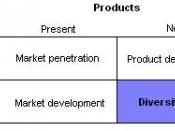Quantas Airlines
Provide a definition of market demand.
The market demand for a product is the total volume that would be bought by a defined customer group in a defined geographical area in a defined time period in a defined marketing environment under a defined marketing program (Kotler 145). It is not a fixed number, but rather a function of the stated conditions.
How are market demand, market potential, and sales forecasting related to each other?
When companies want to estimate the current market demand, they attempt to determine total market potential, area market potential, industry sales, and market share. Once marketers have estimated the demand, they will choose the level of marketing effort based on the expected level of sales. The company sales forecast is the expected level of company sales based on a chosen marketing plan and an assumed marketing environment.
Might the information given influence the revenue and earnings that Quantas could achieve in the future?
The fertility rate of Australia could be a factor in future earnings for Quantas, but not so much as the competition of Virgin Airlines and rising oil prices.
Qantas, facing increasing competition on some of its busiest routes from Virgin Atlantic Airways, Singapore Airlines Ltd. and Dubai-based Emirates, is also losing domestic customers to Virgin Blue Holdings Ltd. "People are concerned that oil prices will have a larger impact on Qantas' fuel costs than initially thought," said Michael Birch, who owns Qantas shares among $72 million of assets he helps manage at Wallace Funds Management in Sydney. "When fuel price goes up the way it has, there will come a time when the cost of the hedge outweighs the future benefit" (Bloomberg.com).
How might Quantas employ such a tool as the Ansoff product/market expansion grid in developing its growth strategies?
Ansoff's matrix offers strategic choices to achieve the objectives. There are four main categories for selection.
Market Penetration
Here, Quantas markets their existing products to their existing customers. This means increasing their revenue by, for example, promoting the product, repositioning the brand, and so on. However, the product is not altered and they do not seek any new customers.
Market Development
Here, Quantas markets their existing product range in a new market. This means that the product remains the same, but it is marketed to a new audience. Exporting the product, or marketing it in a new region, are examples of market development.
Product Development
This is a new product to be marketed to Quantas' existing customers. Here, they develop and innovate new product offerings to replace existing ones. Such products are then marketed to their existing customers. This often happens with the auto markets where existing models are updated or replaced and then marketed to existing customers.
Diversification
This is where the Airline markets completely new products to new customers. There are two types of diversification, namely related and unrelated diversification. Related diversification means that they remain in a market or industry with which they are familiar. For example, a soup manufacturer diversifies into cake manufacture (i.e. the food industry). Unrelated diversification is where they have no previous industry nor market experience. For example a soup manufacturer invests in the rail business.
References
"Quantas Cuts Profits" (2004). Bloomberg L.P. Retrieved on March 22, 2005 from: http://quote.bloomberg.com/apps/news?pid=10001065&sid=a5yXBGYfk5x0&refer=movers_by_index
"Ansoff Matrix" (1957). Monash University Business and Economics. Retrieved on March 23, 2005 from: http://www.buseco.monash.edu.au/depts/mkt/mtp_online/portfolio.php
Kotler, Philip (2005). Marketing Management 11 e/d. Prentice Hall Publishing. Pearson Education. Upper Saddle River, NJ.


